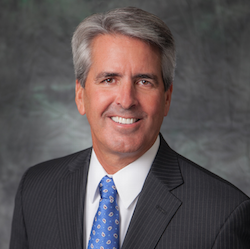In a recent speech, Federal Housing Finance Agency Director Mel Watt raised concerns about the ongoing conservatorship of Fannie Mae and Freddie Mac (the GSEs).
In particular, the director noted his worry regarding the planned reduction in the amount of capital that these two companies will be permitted to hold. Punctuating these comments, director Watt called on Congress to pass meaningful housing finance reform.
The timing of these remarks is noteworthy because they coincide with the GSEs’ fourth-quarter earnings releases (Fannie and Freddie) and a letter from some trade groups to director Watt calling for him to suspend the dividends the two companies are required to pay the Treasury and allow the GSEs to build more capital. Thus a perfect storm has emerged.
The calls to allow the GSEs to rebuild capital amplify an important issue and are based on valid and reasoned concerns that we all share.
After all, the GSEs are a vital component of the secondary mortgage market, and reforming them to ensure their future participation is and should be a priority. Unfortunately allowing them to just recapitalize is simply not a mathematical possibility.
To begin, the earnings of the GSE's are declining due to the reduction of their investment portfolios, the end of windfalls from large legal settlements, the recouping of deferred tax assets, and the release of credit loss reserves as this credit cycle flattens out.
In fact, if you look closely at the earnings announced by Freddie Mac for Q4 2015, of the approximate $1.6 billion comprehensive net income, $700 million was from derivative gains.
The volatility of these hedges are significant quarter by quarter. If you imagined the earnings less loss/gain for derivatives, the net might have been closer to $900 million. In fact, $2.7 billion of the $5.5 billion Freddie Mac earned in 2015 was due to the benefit from credit losses. These benefits are not likely to recur, as delinquency rates are already extremely low.
Now, imagine if the sweep had not been in place and instead Freddie Mac had to pay the 10% dividend that was in place prior to the sweep. While they have actually paid $5.5 billion in dividends in 2015 under the sweep, they would have had to pay $7.2 billion under the 10% dividend.
Similarly, while Fannie Mae paid $10.3 billion under the sweep in 2015, this was also less than the $11.6 billion they would have paid under a 10% dividend.
In the fourth quarter, Freddie Mac’s comprehensive income of $1.6 billion would not be enough to cover the quarterly 10% dividend of $1.8 billion. In this just published Q4 earnings, had the third amendment provision not been in place, they would have been net negative against the dividend obligation that was in place prior to the implementation of the amendment.
According to the terms of their conservatorship, the next step would be for Treasury to charge the GSEs for the government backstop. The fee option, called the "commitment fee", is currently not being charged to the GSEs, even though they are backed today by a line of credit of more than $250 billion from the U.S. Treasury to act as the guarantee against defaults. Such a line of credit is not too different in concept from what lenders who today manage warehouse lines, LOC's, repo lines, and other forms of capital support. Therefore, $250 billion is a commitment expense from taxpayers that would come with a charge for any truly private company.
The challenge in eliminating the sweep lies in the unlikelihood that the GSEs could build enough capital, given the less profitable earnings path ahead. Many observers are already nervous about the earnings for Q1 2016, given the surprisingly large interest rate and credit spread moves that may end up creating a derivatives loss that could push a GSE into a loss position again. Moreover, the widening of credit spreads make the GSEs’ CAS and STACR deals and Freddie Mac’s K-deals much less profitable, as they are effectively paying more to lay off credit risk.
This is why many observers are calling for a permanent solution, one that would protect the critical functions that Fannie Mae, Freddie Mac, and any future guarantor might provide to the housing system.
FHFA has taken a number of the critical first steps, including by building the common securitization platform and the single security. Deeper risk share is another important step to reduce the role the GSEs play, shifting them from being on the bleeding edge of credit default risk to being a catastrophic risk guarantor. Unfortunately, with credit spread volatility, we still see the need for other forms of up front risk share options including lender recourse and private mortgage insurance as examples.
But Congress and the president need to recognize that this unfinished work from the Great Recession looms over our nation and the housing system. As director Watt lamented in his comments, this needs to be resolved and should be a top priority of policymakers. The reality is that Congress will need to establish the contours of the new system and create the pathway out of conservatorship.
A public discourse by stakeholders not influenced by financial gain but for the good of the U.S. housing finance system is needed and we must elevate this now, before the crisis moment when overreaction to unforeseen events might result in less thoughtful outcomes.
The GSEs are far too critical to our financial system and the continuity of the mortgage finance system to be allowed to languish in an un-ending conservatorship.






